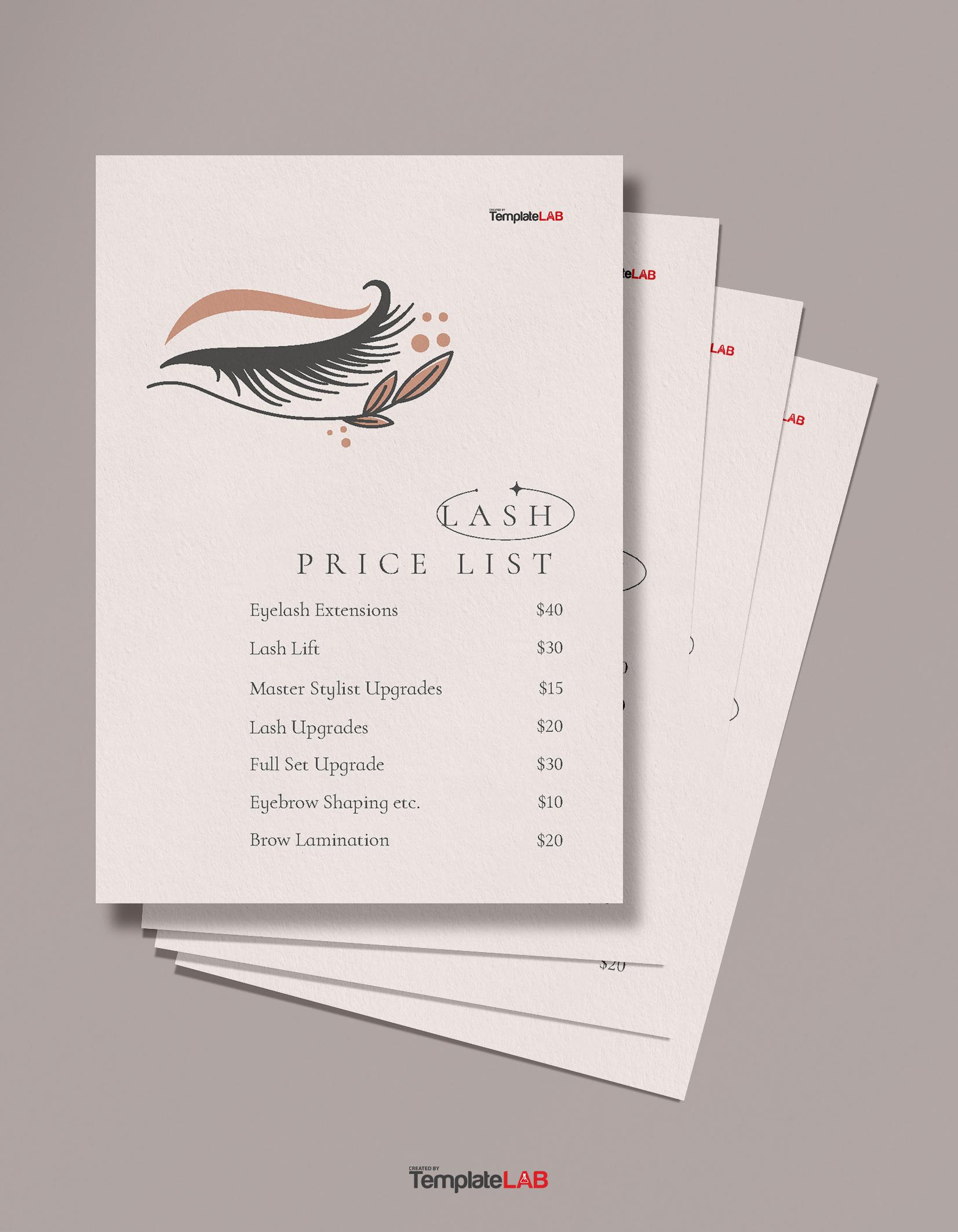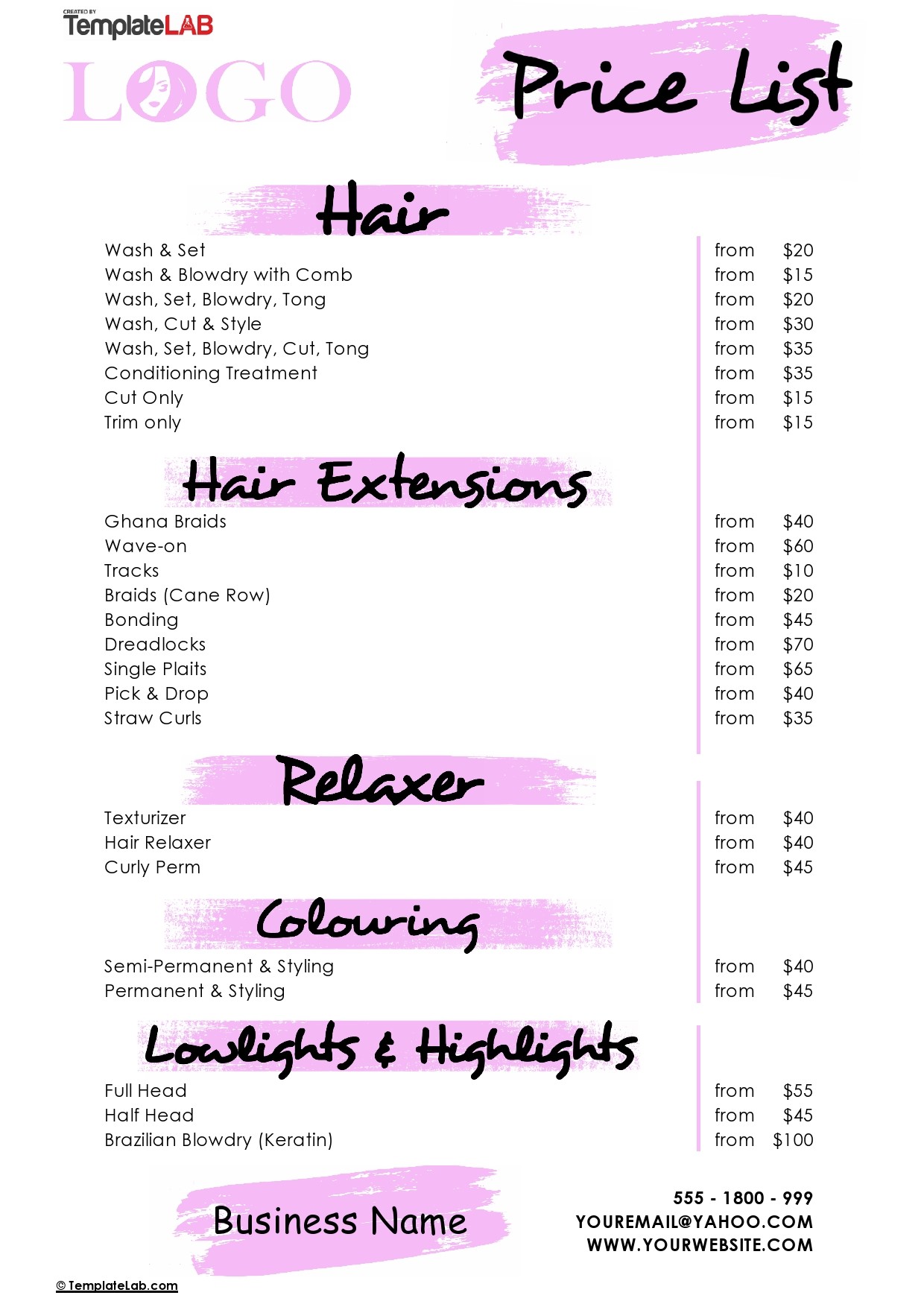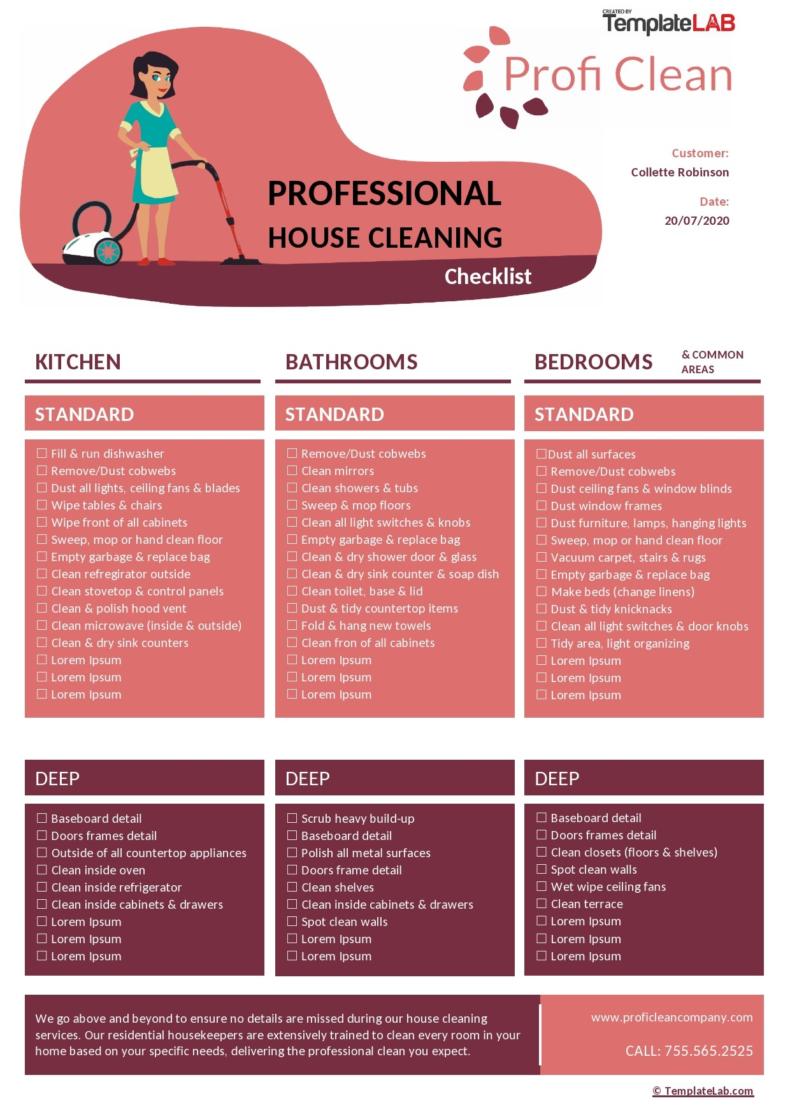For any business, creating a pricing list template is an important task. It enhances your brand while ensuring clients have access to accurate and up-to-date information about your goods and services.
In this article, we’ll outline how to make a user-friendly pricing list template that suits your company’s particular requirements. We’ll talk about reviewing, testing, and maintaining the template with regular updates once it has been launched.
Table of Contents
- 1 Price List Templates
- 2 What is a Price List?
- 3 What is a Price List Template?
- 4 Why is Price List Templates Important?
- 5 Price Sheet Templates
- 6 What are the Different Types of Price Lists?
- 7 Important Components of a Price List
- 8 How to Create Free Price List Templates
- 9 Product List Templates
- 10 The Creation Process
- 11 Pricing Table Templates
- 12 Difference Between a Price List and a Catalog
- 13 Conclusion
Although many people won’t acknowledge it, price is one of the key factors affecting their purchasing decisions. This is why being honest about costs is an important part of capturing and keeping a customer’s attention.
Price List Templates
What is a Price List?
A price list is a document that lists all the costs for the goods and services a company offers its clients. Every business owner knows that a pricing list can influence whether or not a consumer or client decides to do business with them.
However, these lists do not have to include all your products and are merely intended to raise awareness of your business and what you offer.
To ensure that everyone is aware of the price of your items and what they can do, you can target specific societal groups and utilize a variety of languages. Price lists can be created to accommodate specific promotions or reductions because of their adaptability.
What is a Price List Template?
Essentially, price list templates assist you in gathering all the important facts in one location. There are various template designs to choose from. Alternatively, you can create one that best captures the character and brand of your business.
With free price list templates, you can customize the appearance of your pricing list and make sure that the information is presented in an appealing way to grab and keep the reader’s attention.
These templates should provide all the resources you require to produce a pricing list that looks good and is simple to read.
Why is Price List Templates Important?
A free price list template is a crucial sales tool. Customers wouldn’t be able to determine whether they could afford your product or services without it. This list is essential for communicating with your present and new consumers.
Here are a few other important benefits to note:
- Supports marketing your products when you don’t have a catalog.
- Serves as an internal tool to assist in cataloging products and prices.
- Can educate staff members on the actual client cost.
- Provides information about products and services for everyone inside and outside the organization to use.
- Aids in differentiating and positioning a good or service from rivals.
- Consumers can budget and compare prices when shopping at various stores thanks to the standardization of pricing.
- A corporation can alter its starting costs using this useful technique to evaluate costs after learning about operating expenses and profit margins.
Price Sheet Templates
What are the Different Types of Price Lists?
There are primarily two categories of price lists. Although various designs and formats are available, you should only create one digital or physical copy so that both can be uniform. The production and distribution of the digital price list template are simpler and less expensive.
Digital copies don’t require any additional room in your workplace or warehouse. In today’s technologically advanced world, the digital format could seem preferable. Globally, more and more people are connecting to the internet. It’s simpler to contact new internet potential clients with a digital copy.
However, many individuals like to hold something in their hand when evaluating the costs of something, and the hard copy or paper form is more user-friendly. Handing a customer a hard copy in person creates a bond and starts a relationship between them and the business.
Sales will benefit from that connection both now and in the future. Additionally, the paper version is always accessible even if a computer malfunctions, unlike the digital version, which you might not have constant access to.
It’s important to use the most appropriate version for the audience you are attempting to reach.
Important Components of a Price List
Price listings typically don’t fit on one page, especially if you don’t have a lot of merchandise to sell. However, major corporations list hundreds of items, which makes having the following components crucial:
- Cover for the front and back of the booklet
- Index
- Introduction
- Chapter divisions
- Table of contents
- Information about the business
- Purchasing guidelines
You then need to fill in those crucial details with:
- The item’s name
- Stock keeping unit (barcode)
- Product information
- Images for products (if applicable)
- Additional aesthetic modification
How to Create Free Price List Templates
Every firm should almost certainly have a price list. It’s important to remember that you and your staff must create a reliable set of rates. However, you must conduct an extensive study before you can set any prices.
Conducting customer, marketing, and even cost analyses will assist you in deciding how much to charge for your products or services.
Following these steps should enable you to create a decent price list.
- Calculate the price of each of your products.
All of the materials and labor costs associated with producing your goods and services should be included in the price of your offerings.
Some of these expenses are either set (like equipment rental) or variable (fuel or shipping charges). So bear that all in mind and leave the necessary space for changes. - Research your rivals.
While it could require some of your time (and probably some of your money), it will eventually pay off. Knowing that the research can assist you in staying one step ahead of your competitors.
There are several options for conducting research. Examples include asking clients whether they thought the prices of the goods and services provided by your competitors were reasonable. A consumer survey, online poll, customer comment cards, and many other methods are available for doing this. - Consider your location.
Before you begin selecting your prices, consider the neighborhood in which your business is located. Having a strong marketing position is crucial if you have several competitors.
Consider the level of competition your firm faces, how customers will perceive the link between the value of the good or service and its cost, who your target market is, and other factors to assist you in identifying your position in the market. - Don’t undervalue your products.
Many business owners are tempted to decrease their pricing to attract more clients.
This could, however, backfire since clients might believe that your goods or services are of lower quality than the competition, and you might be unable to keep up with the costs to maintain your business.
Your business won’t succeed if you spend more money than you bring in. Instead, it will be headed directly into insolvency. - Avoiding underpricing and overpricing.
If you set them too high, you’ll only drive potential clients away from your company and directly toward your rivals. Because of this, it may be difficult for small businesses to turn a profit or break even.
Product List Templates
The Creation Process
- Make a list of everything you are selling in your company.
Obtaining product descriptions is the first step in the process because you must accurately and concisely define the product.
You’ll need to have an accurate list of your products or services so that you and your staff will know what to charge. You must make a different list for each branch if they sell different things. - Take pictures.
This is the next step in the process if you require visuals to promote your product. A professional should perform this duty to ensure that their own images are clear and present the goods or services in the best possible way. - Set your prices.
You must choose whether your prices reflect normal prices or specifically tailored ones. Some companies set a price for all their goods and services, which applies to everyone who purchases them.
Some businesses provide customers with an estimated price and base their costs on the type of project. If you decide to give out an estimated price list, make sure the consumer is aware of the “worst-case scenario” in terms of how much they could spend. This will prevent them from being astonished when they receive the final bill. - Become familiar with inventory list formatting.
To make it simpler for buyers to view the pricing of whatever they’re after, a price list typically takes the form of a table. Therefore, each of your prices should be accurate for the corresponding goods and services.
Additionally, the price sheet template should contain any additional information, such as the cost of shipping or if the item’s price includes or excludes taxes.
Also, it would be beneficial if you arranged everything alphabetically, categorize the products, and even put the corresponding prices from highest to lowest, or whichever your particular company model dictates. - Design the layout carefully.
How the contents appear will either encourage potential customers to purchase your stuff or turn them away. This must be done with extreme caution and common sense, just like the product images. You can outsource a graphic designer for this step to ensure the best quality work. - Share your updates.
Share your pricing list and final price list when you’ve decided on your offer prices. Customers will appreciate using the lists as purchasing guides. You can share it on your company’s website or by emailing your clients. If you have clients who have come to rely on your company, you must keep them informed and email them as soon as anything changes. - Create the template.
A design that is aesthetically pleasing and expertly executed reflects favorably on your business and may boost client engagement. Use your company’s fonts, colors, and logos to create the template in Microsoft Word, PowerPoint, Excel, Google Sheets, or Google Docs. Make sure the layout is clear, readable, and eye-catching. Use white space to make your pricing list template easier to read. - Examine and validate the template.
To guarantee that your clients have a flawless experience utilizing your price list, testing helps identify any difficulties that may be present.
Verify your pricing details, descriptions, and the price list template’s overall structure one more time. To ensure the template looks good and works properly across various gadgets and platforms, test it out. - Maintain and update prices on your template.
Maintaining a pricing list template will ensure your clients can access correct and up-to-date information. Make sure you have a procedure in place for reviewing, maintaining, and updating your pricing list template.
Think about alterations like the addition of new featured products, the removal of products, and the alteration of prices. By taking this action, you’ll make sure that your clients always have access to the most recent details about your goods and services.
Pricing Table Templates
Difference Between a Price List and a Catalog
These two tools fundamentally differ because the latter is solely a sales tool. It’s not utilized for brand preference or promotion. The catalog is used for advertising and sales and is significant for the brand name.
That said, to increase interest in the catalog and products, the brand is advertised. While everyone may simply learn the product’s price from the pricing list.
Conclusion
A crucial first step in giving clients accurate and current information about your goods and services is to create your own list template.
By using the procedures indicated above, you can produce a user-friendly template that satisfies your company’s particular requirements while maintaining market competitiveness.
You will be able to provide clients with thorough product information that aids in their decision-making through meticulous research, design considerations, testing, and routine template maintenance.


































